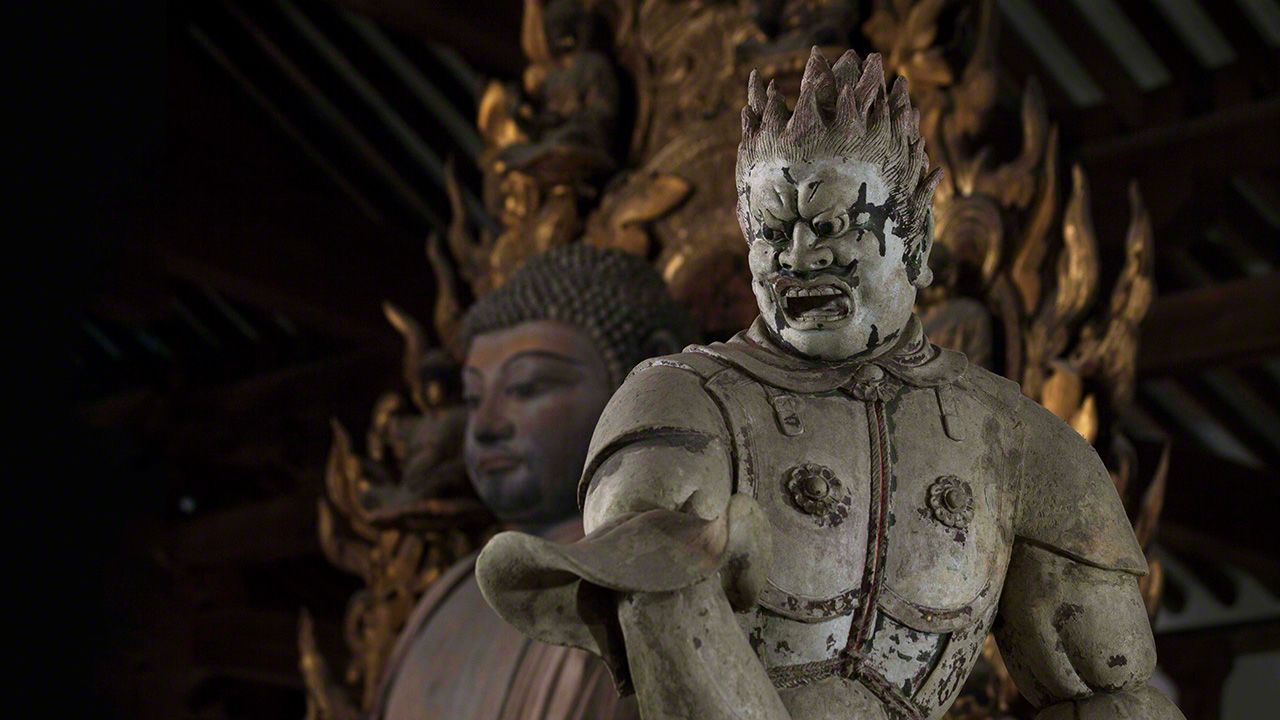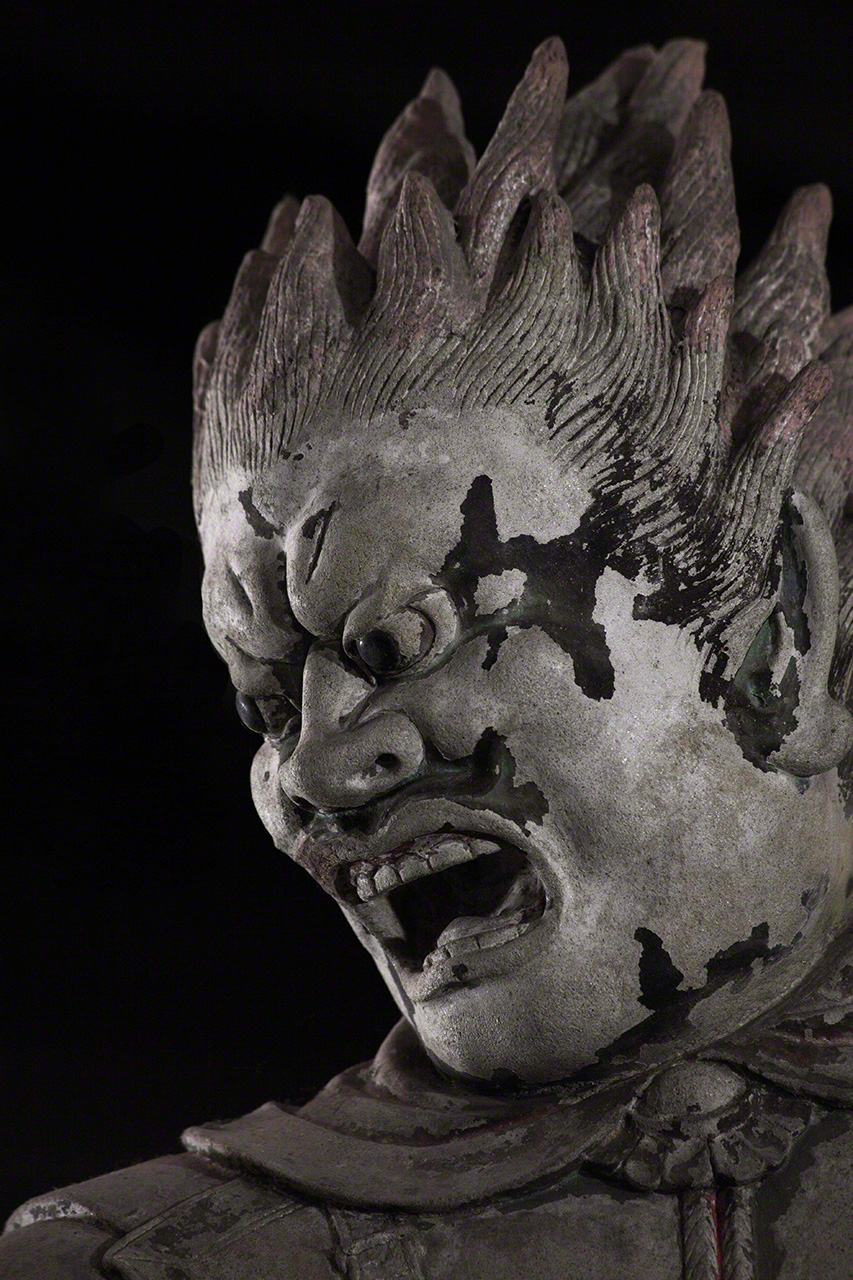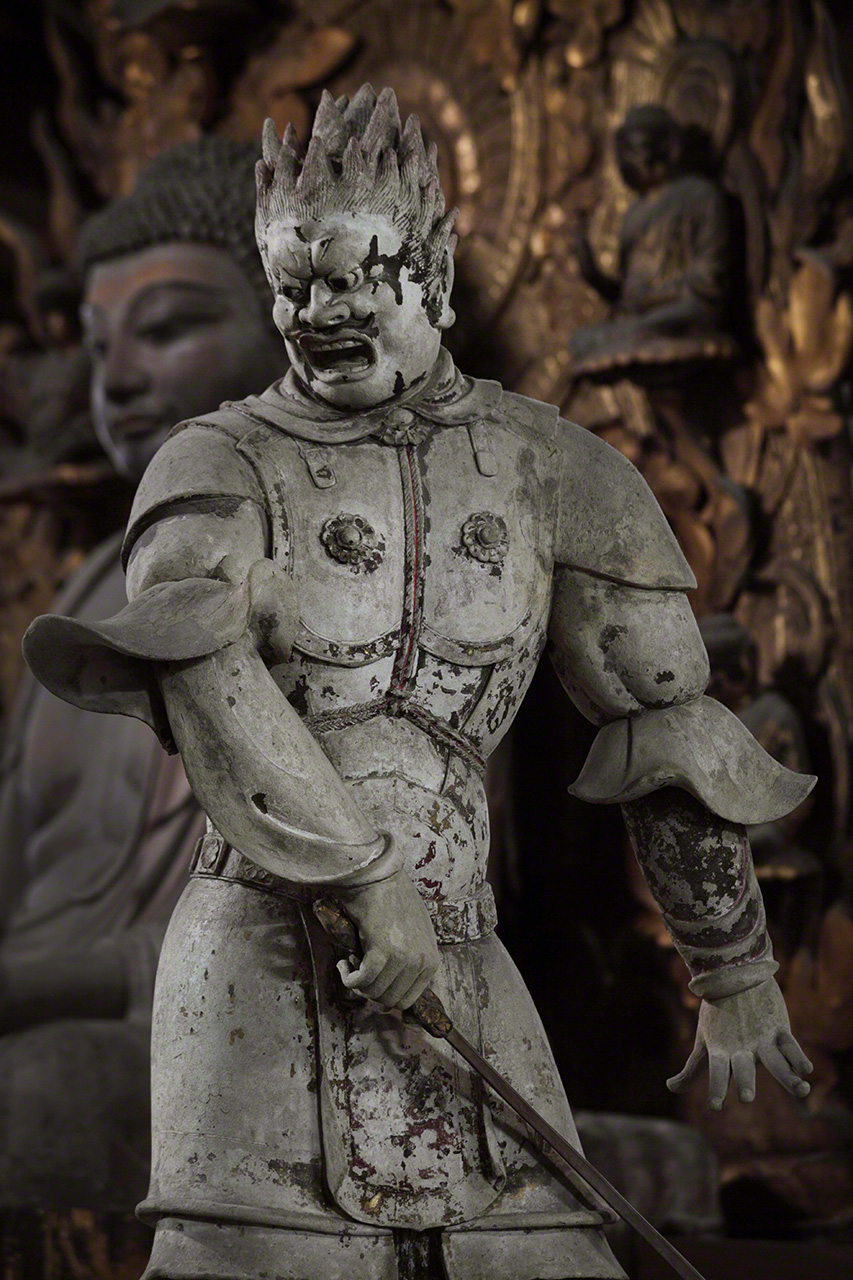
Standing Image of Bazara, One of the 12 Heavenly Generals
Arts Culture History- English
- 日本語
- 简体字
- 繁體字
- Français
- Español
- العربية
- Русский
This image projects an overwhelming sense of barely contained energy and dynamism, ready to leap into action at any moment to defend the dharma.
The sculpture depicts Bazara (Vajra), the “Dog General,” one of the 12 Heavenly Generals from the temple Shin-Yakushiji in Nara. The 12 Heavenly Generals stand guard around the image of the Yakushi Buddha (Bhaisajyaguru), the “Medicine Buddha,” each general commanding an army of 7,000 troops.

(© Muda Tomohiro)
According to tradition, Shin-Yakushiji was built in 747 by the Empress Kōmyō, in the hope of a cure for an eye ailment afflicting Emperor Shōmu, who was working to complete the Great Buddha Hall at Tōdaiji at the time. According to records in the Shōsōin treasure house, Shin-Yakushiji originally stood on impressive grounds, with tall pagodas to the east and west of a sacred precinct approximately 440 by 440 meters in size, endowed with numerous temple buildings. In 780, however, most of the structures were destroyed by fire following a lightning strike, and in 962 the main prayer hall was brought down by a violent storm. Today, only the refectory survives from the original structure. Once a dining room for the monks, it now serves as the main prayer hall.
Seated on a circular dais in the center of the hall is the chief image of the temple, a seated image of Yakushi Nyorai, the Buddha of healing and medicine. Forming a protective circle around the main image, the 12 Heavenly Generals peer fiercely in all directions, vigilant against danger. The guardian deities seem to belong so convincingly with the main image that it is easy to assume they must have been made at the same time, but in fact most experts believe that the generals originally stood in the Iwabuchi temple (no longer extant) and were moved to their present location at a later date.
Eleven of the set are originals, dating from the Tenpyō era (729–49)—the twelfth figure, depicting Haira or Payila, the “Dragon General,” was made in 1931 to complete the set. They are collectively designated as national treasures. The images were made using the sozō technique, in which clay and other pliable organic materials are pressed in layers onto a simple wood framework. This piece was made by coiling rope around the central framework, and coloring was then applied on top of a final layer of white clay. Previously, most Buddhist images had been carved out of a single piece of wood or molded in bronze. The introduction of this new technique from China allowed sculptors to introduce more nuance and detail into their work. The gentle swaying of Bazara’s sleeve is one aspect of this piece that would have been impossible without this new technique.

(© Muda Tomohiro)
Originally, the image would have been vividly colored, with the sharp shocks of hair painted vermilion, the lips red, and the armor yellow and green. The mouth is open wide in a snarling roar, while the glaring eyes—made of black glass beads, as precious as jewels when the sculpture was made—are ready to face down any threat to the dharma. This powerful expression of righteous defiance is sometimes said to have influenced the development of the distinctive kumadori makeup of the kabuki theater. The strikingly heroic pose, full of energy and movement, sword in the right hand, certainly packs a dramatic punch. The image conveys a vivid sense of absolute resolve and determination not to allow any enemy of Buddhism to come even one step closer.
Standing Image of Bazara (Vajra), One of the 12 Heavenly Generals
- Height: 162 cm
- Date: Nara (Tenpyō) Period (729–49)
- Shin-Yakushiji (Nara Prefecture) (on display year-round)
- National treasure
(Originally published in Japanese. Banner photo: Standing Image of Bazara [Vajra], One of the 12 Heavenly Generals, Shin-Yakushiji, Nara. © Muda Tomohiro.)
